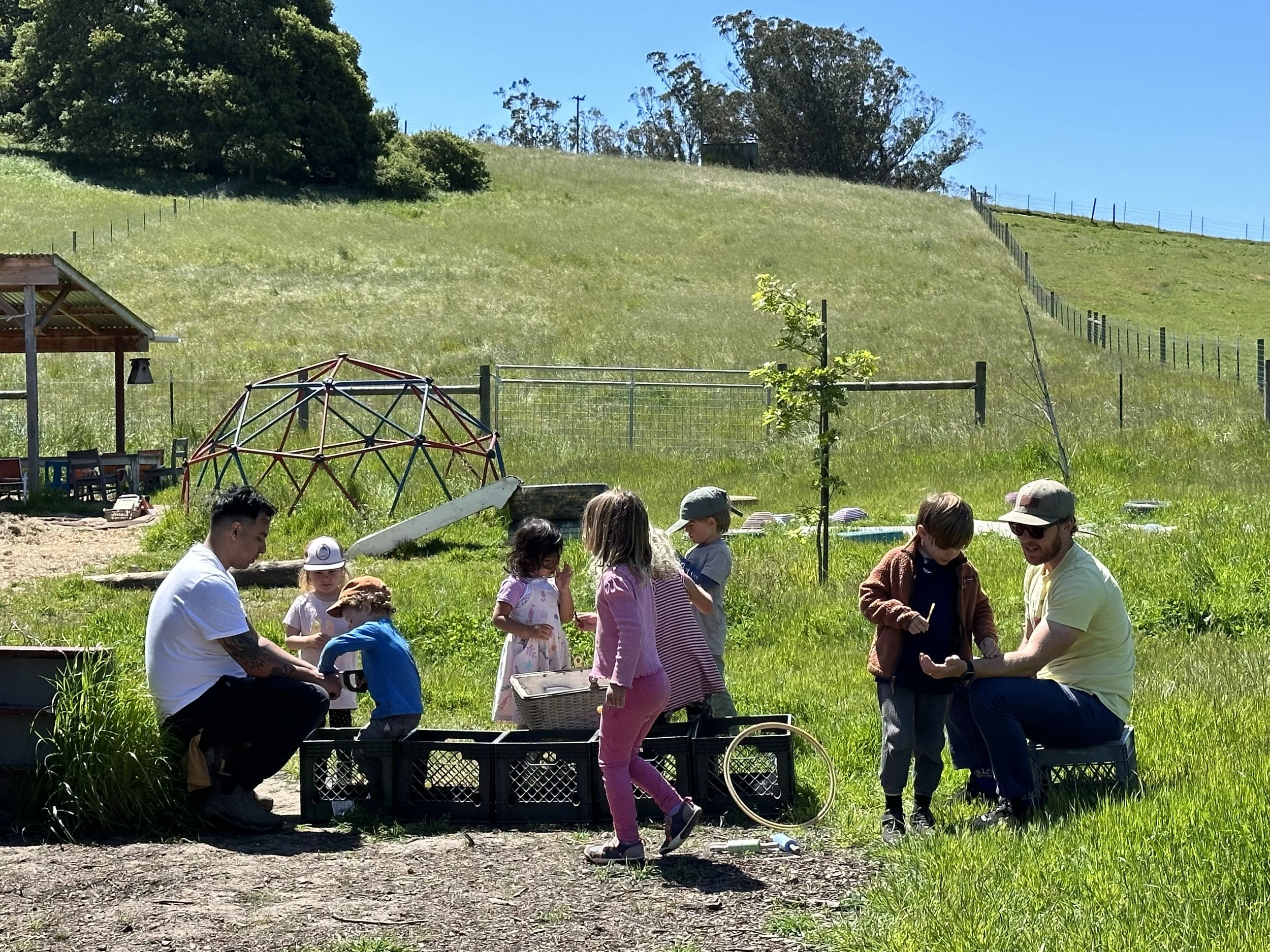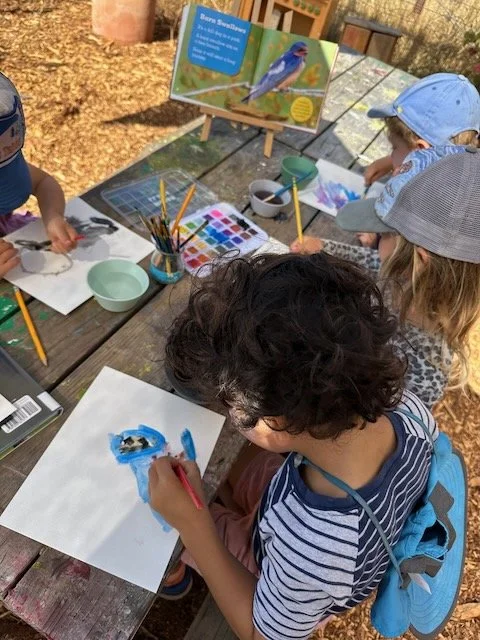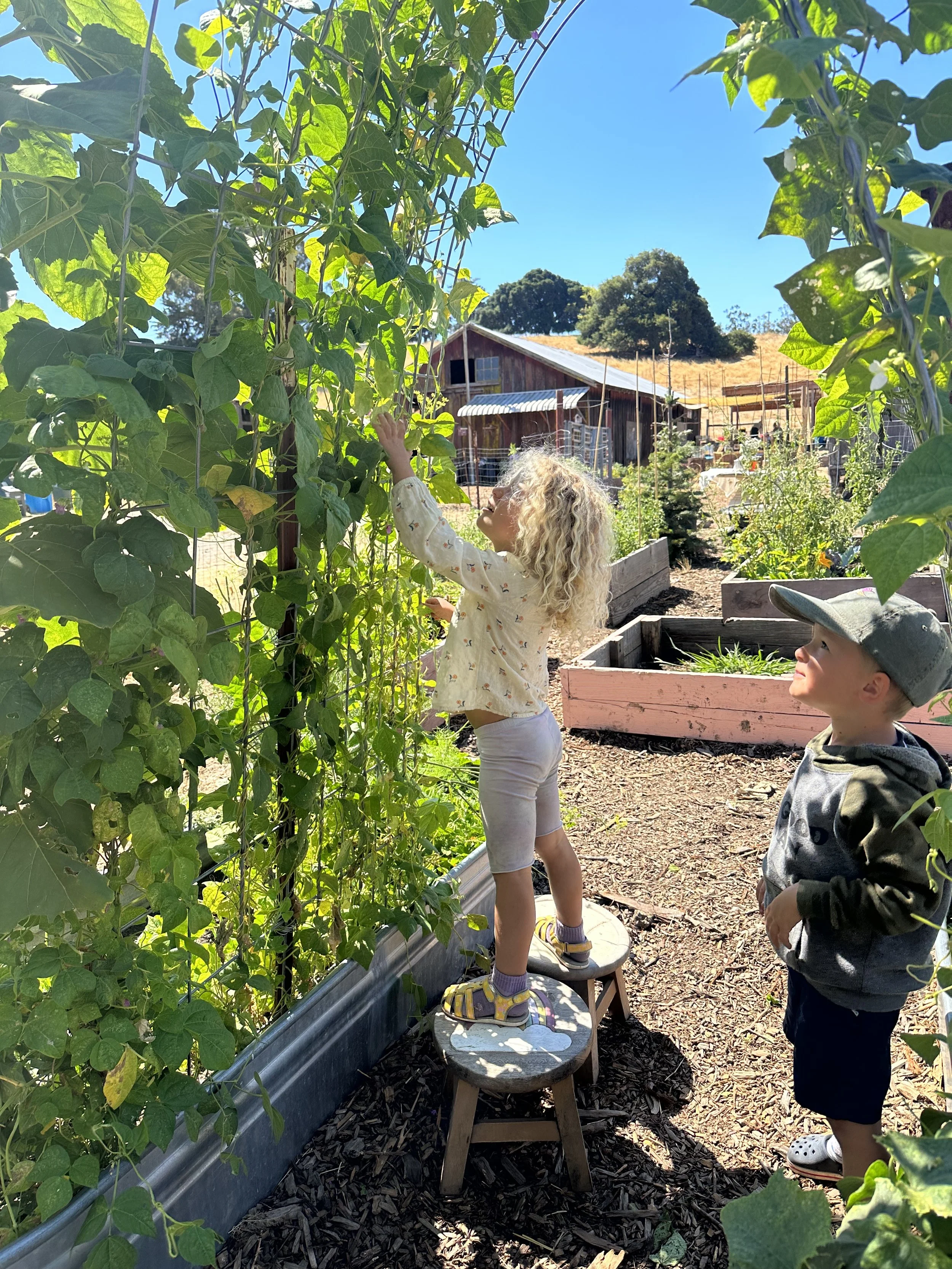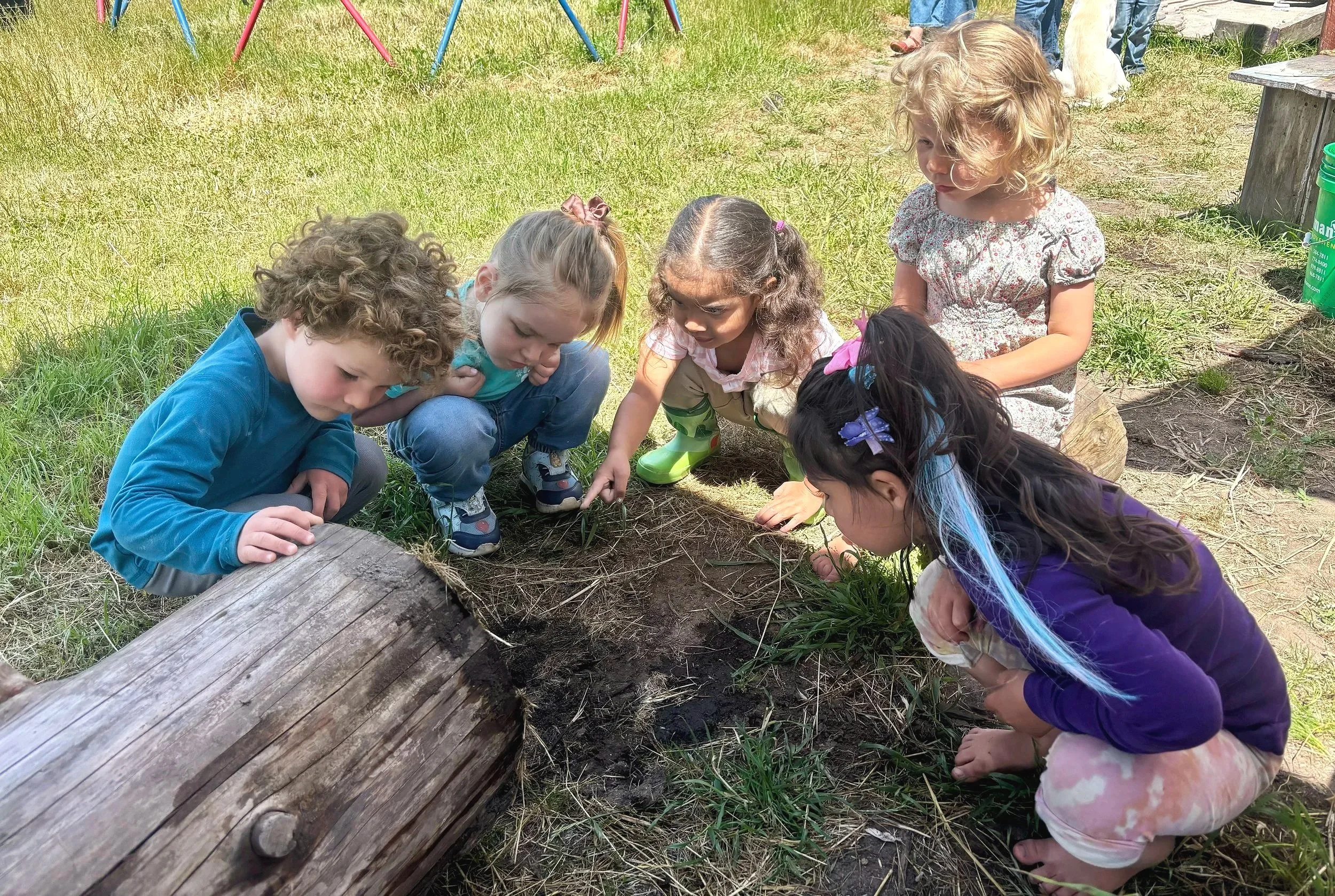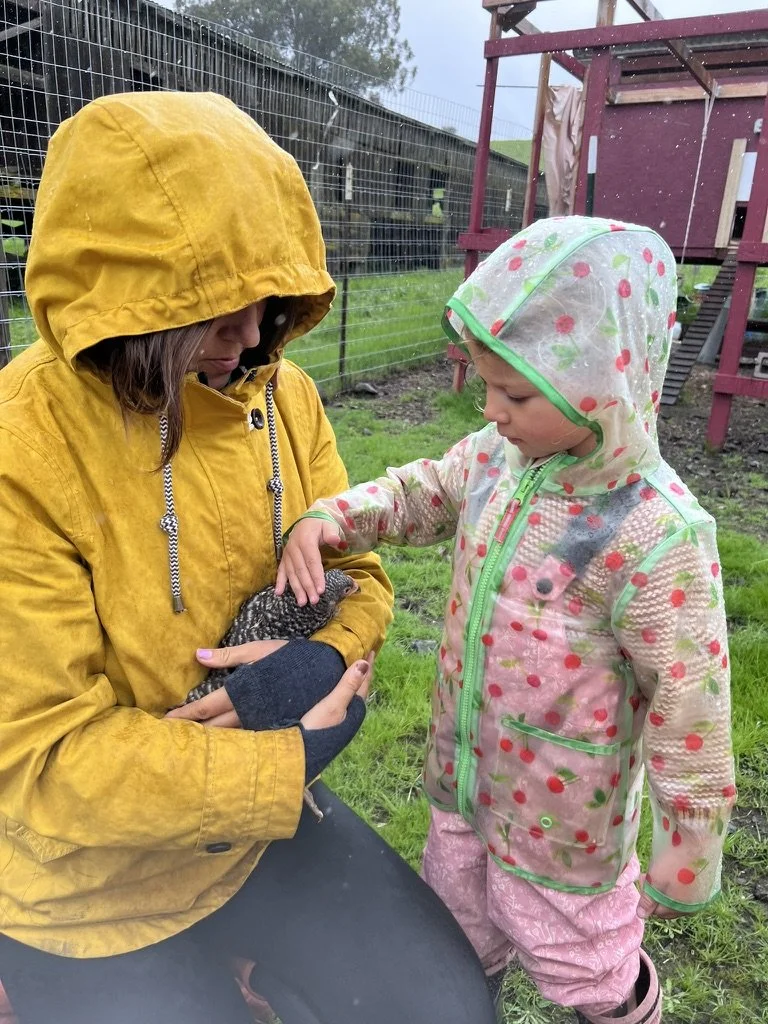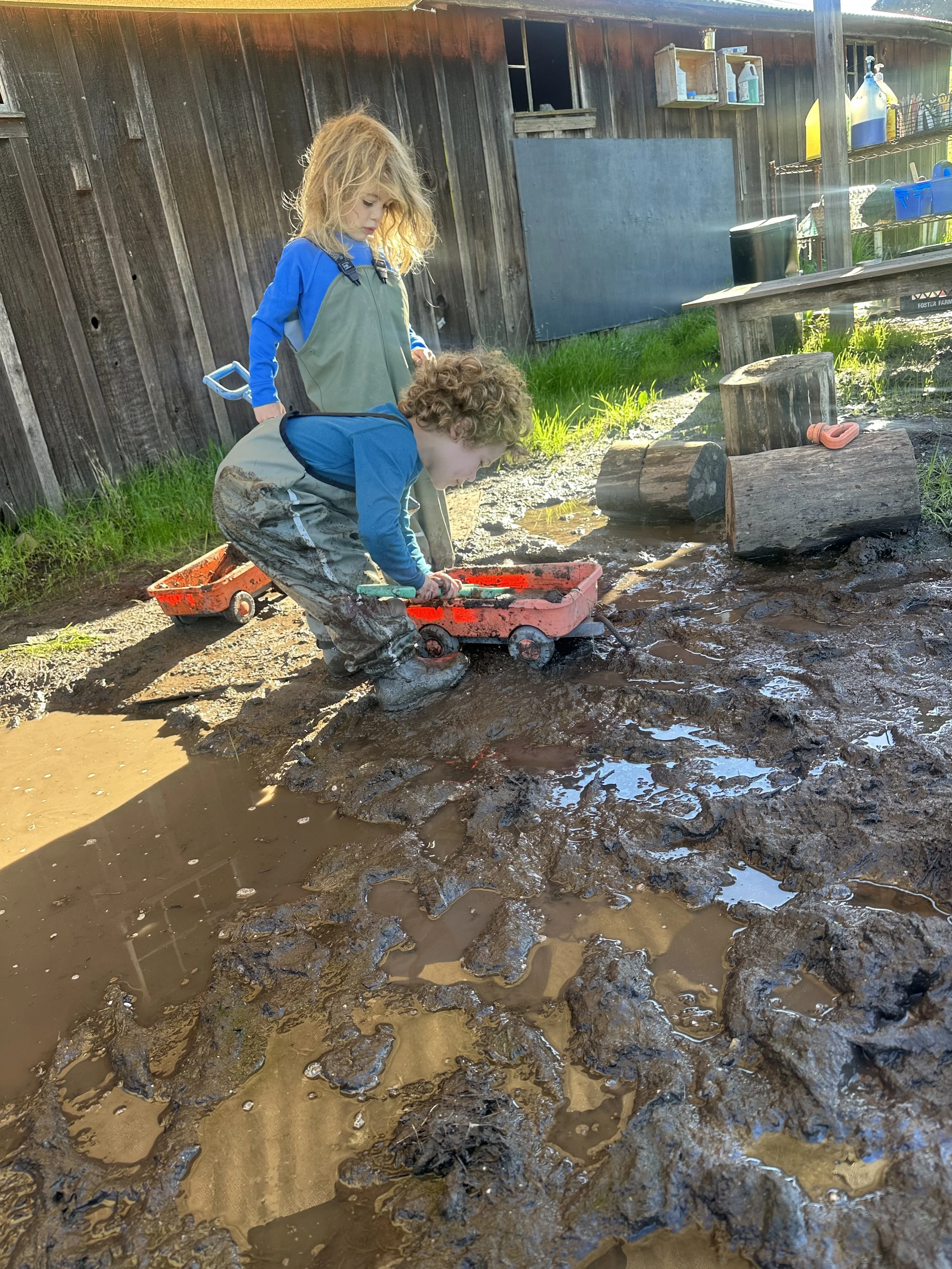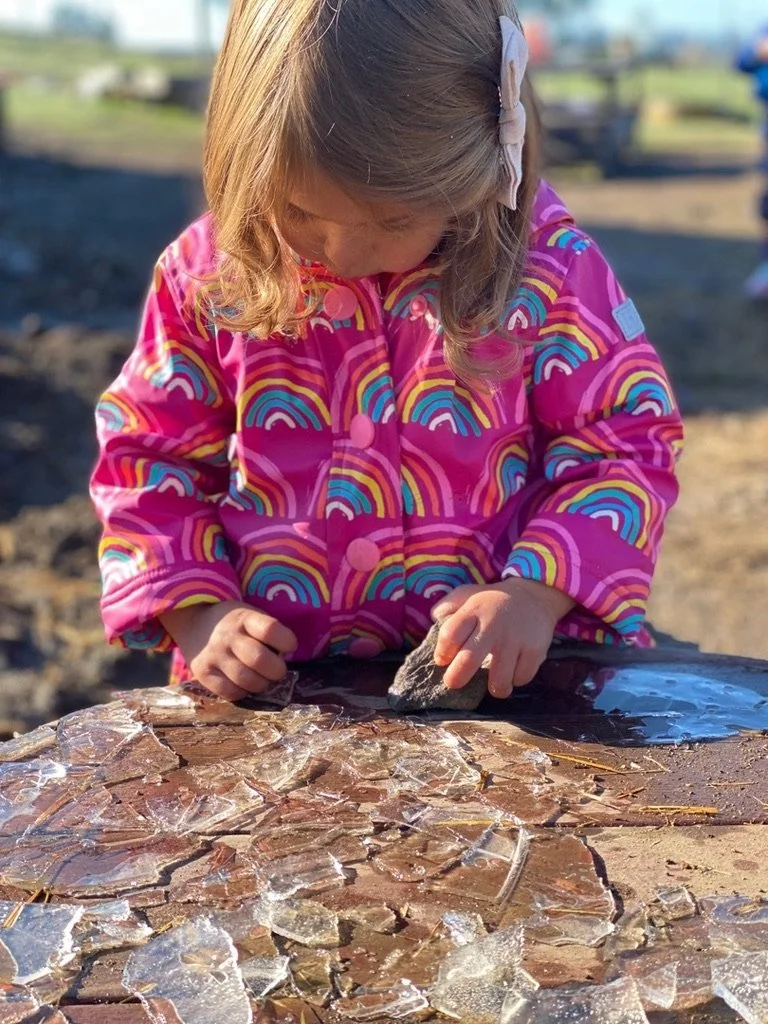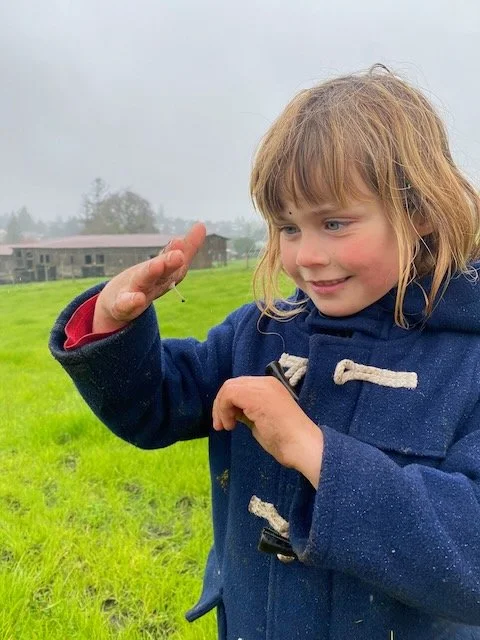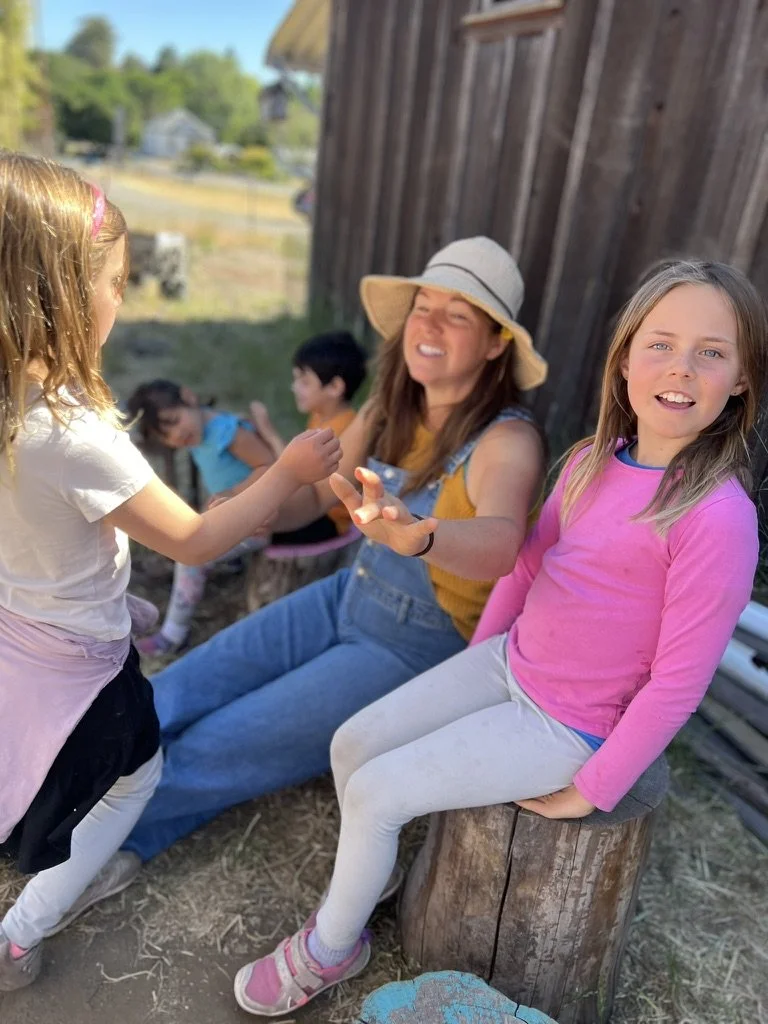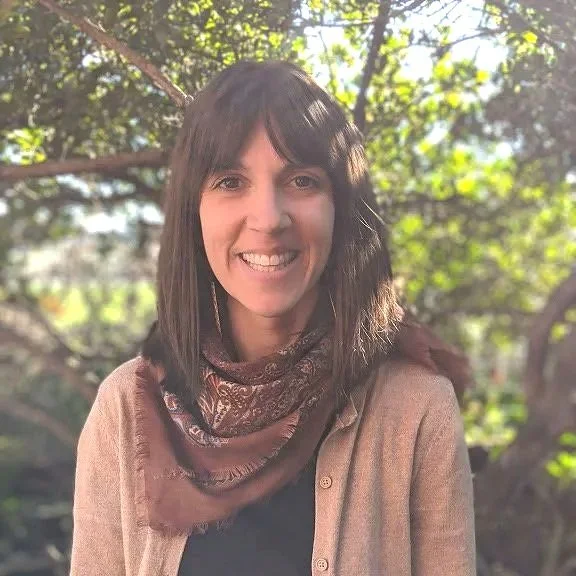Who We Are
We implement a co-authored, play-based and inquiry-based approach to learning and development. Children are deeply respected, witnessed and listened to as we give back to the land on our two-acre farm site.
We support families seeking alternative education where children’s need for movement, play, and freedom to explore are revered as the foundation upon which lifelong learning dispositions are built.
A working farm and a living lab school: We fight climate change through regenerative agricultural practices and spend our days working and playing outdoors in (almost) all weather.
We cultivate an edible school garden and steward animals as part of our daily rhythm, weaving these experiences and responsibilities into meaningful, hands-on learning.
We host a license-exempt, cooperative nature school for children ages 2–8, along with afternoon classes and seasonal camps for ages 3–6 and 7–12.
We also support grown-ups in learning and growing alongside their children—cultivating a community of shared discovery, reflective practice, and collective care.
Our Curricular Pillars
Physical Play
We give big open spaces and a variety of loose parts and movable materials (mats, hay bales, crawl-through tubes, tires, pvc pipes) so that children are encouraged to move their bodies in many different ways. Physical development—which requires some risk taking—is a crucial foundation for brain development and self regulation as well as self confidence and personal resilience. Our loose parts also lend themselves well to physics studies through ramp making and rolling courses or moving water through child constructed channels. We often climb our big hill to engage different muscles in tree climbing, seeing long distance, and foraging wild greens.
Multi Sensory Play
The Mud Kitchen is the heart of our play yard: children of all ages busy themselves with mixing, grating, sprinkling, and pouring. They stay focused and in flow as they stir their mud and water mixtures just right. They are pretending, negotiating, turn taking, measuring and testing volume relationships, and developing methodologies of creating (for instance, one child often revisits and refines his process of making coffee using a strainer, a funnel, and a tube to make a beautiful cup of artisanal drip coffee!). The mud kitchen is richly satisfying many play schemas all at once!
In addiiton to the mud kitchen, we offer children a vaiety of other sensory activites and textures, such as paint, water play, sand, clay, play dough, soil, and the gathering of natural materials such as flowers, dirt, rocks, grass.
Creative Projects
We invite children to express themselves creatively through a variety of art materials. Creative projects are often teacher-prompted and intentionally chosen as a connection or representation of a discovery the children are thinking about; for instance, the bright blue sky on a crisp winter morning, or a study of the swallows in June who have returned to their mud nest in our barn: the watercolor portraits are an opportunity to study the bird’s features and to ponder their migration journey as the children paint while looking at provided images. Other frequently offered materials include blocks, wood and wood working materials, recycled materials for inventions and sculptures; tempera paint, chalk; mark making utensils such as pens and markers; journals for playing with marks or recording ideas; clay, yarn, wire, collage materials, paper, and of course leaves and flowers from our garden.
Farm Stand Fridays
A project particularly beloved by our 7 and ups, children harvest ripe and ready greens, herbs, veggies, eggs, and fruits to sell to their community via a farmstand every Friday. They themselves cut and bundle their produce, arrange small bouquets, set their own pricing and make their own signage. Some work on an orderly display on the farmstand table. All of the children involved find jobs to take on that they feel passionate about. Their favorite, of course, is to interact with their customers and exchange the produce for cash. The farmstand proceeds are then re-invested into our garden program as purchases of seeds or starts or other necessary gardening supplies.
Days at Sunbeam follow the gentle pace of nature—guided by biorhythms, tasks of the land, and shaped by these meaningful curricular pillars.
Garden
We have an organic vegetable and flower garden that children are guided to use with care. Through intentional practice and protocols, children come to appreciate the life cycles they are tending—from seed to sprout to harvestable food, and back to the soil as compostable food scraps. We engage in a garden-inspired cooking project 1–2 times per week, allowing children to transform what they’ve grown into shared meals and snacks. These experiences nurture a deep connection to the earth, foster healthy eating habits, and encourage collaboration, responsibility, and pride in meaningful work.
Animals
Animals are cherished members of the Sunbeam learning community. Children help care for chickens, guinea pigs, sheep and lambs. Animals allow us to observe life cycles, understand biology and animal behavior, and learn to attune to other beings and their nonverbal cues, which requires some bravery and some practice in mindfulness and self regulation. The children love searching for worms and bugs in the earth and pollinators in the garden. They observe the nesting behaviors of birds and delight in the nearby cheeps of newborns. These experiences with living animals foster emotional connection, support social-skills development, and invite rich conversations about needs, interdependence, and the ethics of care.
Children in our program are self-directed learners, excellent collaborators and skilled problem solvers. They are resilient. They feel safe to be themselves. We experience peaceful transitions from home to school. This is the magic of our outdoors, child-centered space.
Come see the magic of Sunbeam
A tapestry of textures, smells, sights, temperatures: learning in all four seasons provides an amazing array of rich sensory experiences.
Encountering the changes of the season can feel exciting and novel, and yet familiar and friendly too, such as when we remember that when the sun gets a little longer and the weather turns hot, it’s just about time to welcome the sweet purple grapes growing heavy on the vine. And after we pick most for us and leave some for the birds, the grape leaves change from their brilliant green to a beautiful bright red.
The days get colder and crisper, and then the rain comes. For cold and wet weather, we have a specific way of dressing at Sunbeam. We wear wool or poly base layers with durable waterproof layers on top. We wear hats and mittens. Changes of socks are essential. All of these clothings provide wonderful practice with our own zippers and buttons while we learn to listen and respond to the cues of our bodies!
The rain forms streams for jumping or boat floating, and mud and mud puddles become the dominant play texture on campus. Just when we are starting to grow weary of all the wet days and have found ourselves retreating into the shelter of the little barn more frequently, the signs of spring come pushing through, and we grow excited over new delicate flowers and tiny blades of green grass that start to blanket our play yard and hill. The skies are a cinematic show each day as we feel the breeze on our skin and play with silks in the wind.
Dive deeper into our teaching philosophy to understand how we learn.
Seasons & Weather
Each season and every kind of weather can elicit gratitude. Few conditions keep us fully indoors: smoky air days over 90, winds over 35mph, thunder & lightning.
Our Leadership Team
Shawna Thompson (she/her)
Founding Director
Shawna Thompson founded Sunbeam Nature School in 2020 with a clear and courageous vision: to offer children and families a safe, healing, and joyful outdoor learning experience during a time of cultural uncertainty and disconnection. What began as a response to crisis has since grown into a thriving, interconnected community rooted in nature, justice, and care.
A mother of two and a lifelong educator, Shawna brings over 25 years of experience working with children in a wide range of learning environments. She was a founding teacher at several of San Francisco’s most innovative and respected early childhood programs, where she cultivated her passion for weaving outdoor exploration with hands-on, inquiry-based learning.
Shawna’s pedagogical approach is deeply influenced by the Reggio Emilia philosophy, emergent curriculum design, and her unwavering belief in children’s rights to play, choice, and meaningful work. Whether facilitating a creekside story circle or guiding children through real-world problem-solving with real tools, Shawna holds space for young learners to be seen, heard, and empowered.
In addition to her classroom leadership, Shawna has led workshops for parents and educators, contributed to two published books on early childhood education, and co-authored a forest preschool startup handbook and training manual. Her mission now expands through Sunbeam’s nonprofit outreach—advocating for the rights and wellbeing of children and families, and creating models of education that are liberatory, life-affirming, and grounded in the wisdom of the earth.
Our Leadership Team
Alanna Sullivan (she/her)
Assistant Director
Alanna brings a deep commitment to collective care, embodied resilience, and earth-led learning to all that she does. She is a mother of two wildly curious children, who continue to be among her greatest teachers. Her approach to caregiving and education is rooted in relationship, with self, family, community, and the land. Over time, her mothering has become intuitive, child-led, and shaped by the cycles of the earth and the lessons of living in connection with others.
For over a decade, Alanna has worked at the intersection of nature connection, community organizing, and caregiving. She holds group spaces that invite authenticity, repair, and shared responsibility. She values the messy, beautiful work of raising children within community rather than in isolation, and believes in building systems of support that are honest, accountable, and liberatory. As a trauma-informed educator and mentor, she brings particular attention to boundaries, consent, and emotional safety, especially in her work with youth and families.
Her approach is shaped by her time mentoring with Weaving Earth, an earth-based educational school in Sonoma County, and her participation in their 9-month adult immersion program, Attune. These experiences deepened her understanding of somatics, justice, grief, and interdependence, and continue to inform the way she listens to children, co-creates with families, and relates to the more-than-human world.
Alanna is also a folk herbalist and facilitator of The Work That Reconnects, weaving together somatic tools, grief tending, storytelling, and herbal support to help others reconnect to inner guidance and the wider systems that hold us. She holds deep respect for the often unseen work of raising children, tending relationships, and showing up for community. Her work is an ongoing practice of listening, tending, and returning to what matters most.

The Story of Our Name
Our story begins with a child’s drawing from her imagination. She bravely shared it with her teacher. What unfolded for her and her peers was a collective group identity as “artist-scientists”.
Our founder, Shawna was inspired to name our school “Sunbeam” from a very fond and impactful memory from the spring of 2011, when she was teaching in the foggy Presidio of San Francisco.
A five-year-old student had drawn an image of an idea in her journal, a dreamcatcher-like design she called a “Sun Trap.” Her idea was to attract sunshine into the sun porch adjacent to their classroom to make it brighter and warmer. It was such an amazing idea that the class formed a “Sun Trap Committee.” Their goal was to find the friendliest materials for the sun.
Together, they built a sculpture from an upturned umbrella, decorating its frame with shimmering, translucent treasures: a collaborative gift for their school, an amazing product after months of discovery, intention, discussions both analytical and whimsical, a museum field trip, and painstaking hours of gluing, attaching and wire-wrapping.
Years later, when Shawna began envisioning a school rooted in joy, wellbeing, creativity, and possibility, Sunbeam felt like the perfect name, in hopes of illuminating the importance of play, where big dreams are welcome and children are free to shine.

